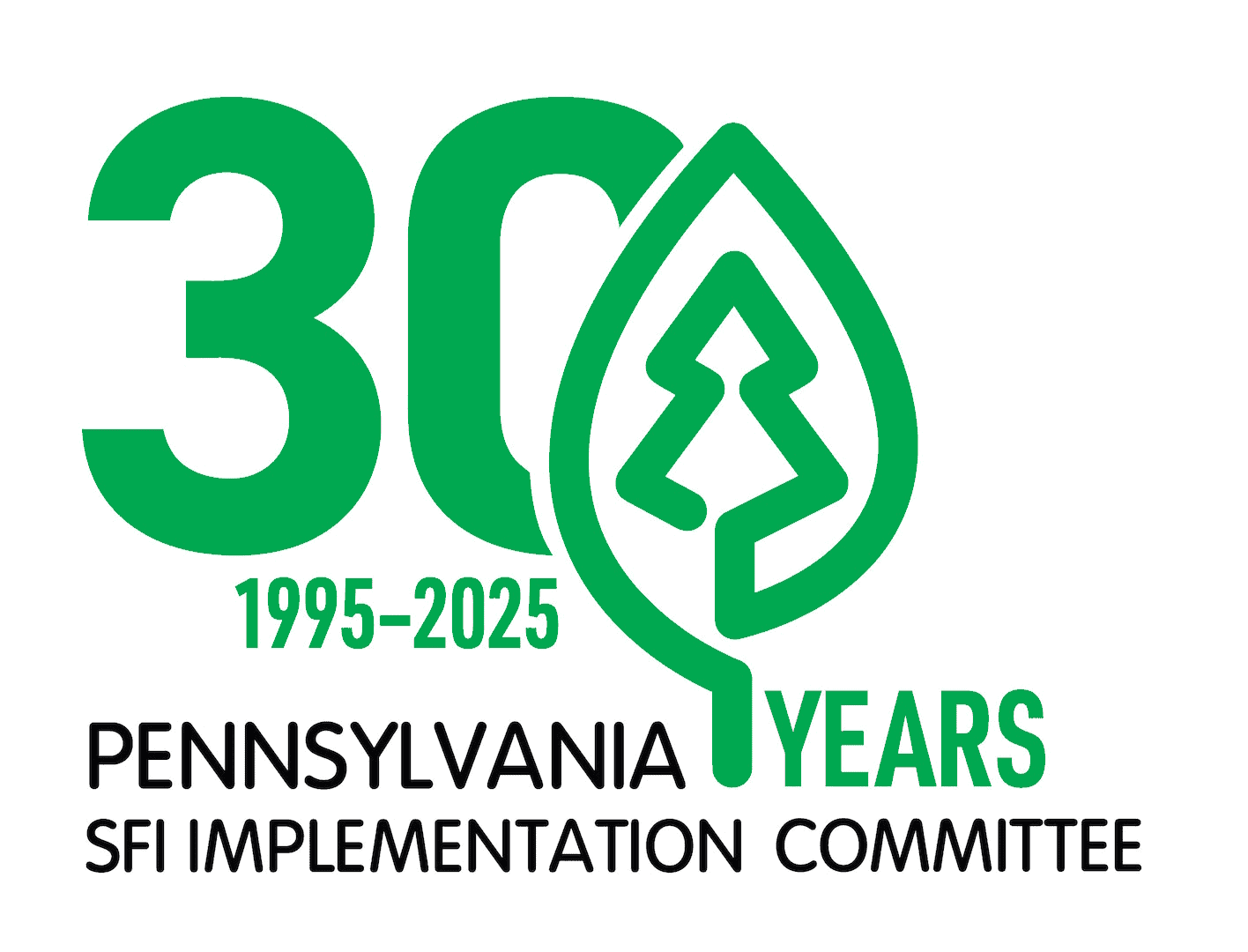
ENVIRONMENTAL REGULATIONS & PERMITTING
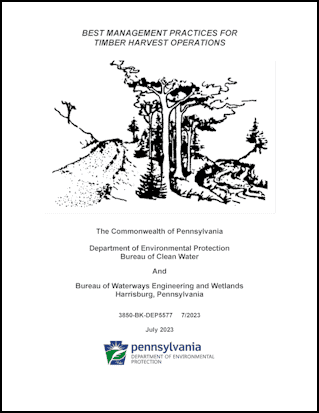
Both federal and state laws address earth disturbance activities which have the potential to affect water quality and discharge pollutants into waters of the Commonwealth (wetlands, rivers, streams, and lakes regulated by state and federal government). These laws include sections 401 and 404 of the Water Pollution Control Act Amendments of 1972 (known as the Clean Water Act) (33 U.S.C. §§ 1341 and 1344), the Clean Streams Law (35 P.S. §§ 691.1-691.1001), Dam Safety Encroachments Act (32 P.S. §§ 693.1-693.27), and the regulations thereunder.
Persons proposing or conducting timber harvesting activities in the Commonwealth of Pennsylvania should be familiar with these laws and regulations. For additional information refer to Best Management Practices for Timber Harvest Operations (DEP publication 3850-BK-DEP5577).
- Many of Pennsylvania’s water quality regulations are issued under the authority of the Clean Streams Law and are enforced by Pennsylvania’s Department of Environmental Protection (DEP). The Clean Streams Law is the main law designed to protect Pennsylvania’s water resources and sets forth the legal framework intended to “preserve and improve the purity of the waters of the Commonwealth.”
- The Federal Water Pollution Control Act Amendments of 1972 (33 U.S.C. § 1251 et seq.) (Clean Water Act) is the primary federal law that protects the health of our nation’s waters, including lakes, rivers, and coastal areas. The Act regulates discharges of pollutants into waters of the United States and regulates quality standards for surface waters. The Act is jointly enforced by the United States Environmental Protection Agency (EPA) and the United States Army Corps of Engineers (USACOE).
PENNSYLVANIA CONSERVATION DISTRICTS

Pennsylvania has 66 county conservation districts, one in every county except Philadelphia. Each Conservation District is led by a Board of Directors made up of local people from all walks of life. Conservation districts implement a variety of programs, and provide assistance for a range of issues unique to their county. Many have delegated authority from DEP (see Additional Resources below). Conservation district staff can help Pennsylvania’s Professional Timber Harvesters comply with state and federal erosion and sedimentation regulations as well as stream crossing permitting requirements. They are also very knowledgeable on Best Management Practices (BMPs). Contact your local conservation district whenever you have a question or need assistance.
PA CODE: CHAPTER 93


Under Chapter 93, DEP sets water quality standards for Pennsylvania’s surface waters, including wetlands. These standards are used to assess whether Pennsylvania’s surface waters are capable of supporting different water uses such as fish and other aquatic life, recreation, water supply for drinking, agriculture and industry, and other protected uses.
- All surface waters in Pennsylvania are classified based on their designated use and associated water quality criteria under Chapter 93.
- Surface waters may also have an existing use classification that reflects the use they are actually attaining.
- Designated and Existing use classifications can be looked up on PA Conservation Explorer.
- The designated and existing uses assigned to Pennsylvania’s surface waters can affect their regulatory protection and permitting requirements. Both designated and existing uses are equally protected when DEP issues a permit or approval for an activity which may impact the surface water’s use (i.e., if either use classification has higher protection requirements, those requirements would apply).
- Particular attention should be paid to special protection waters that are designated as High Quality Waters (HQ) or Exceptional Value Waters (EV).
PA CODE: CHAPTER 102
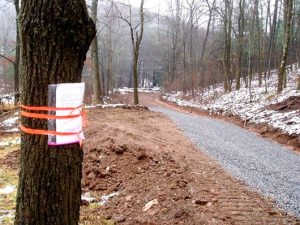
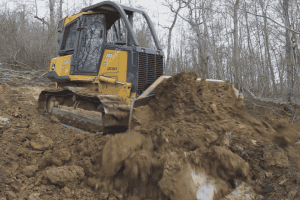
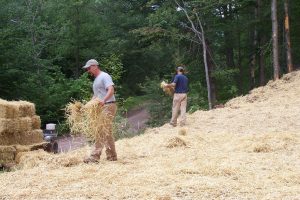
In Pennsylvania, all earth disturbance activities must be undertaken in accordance with DEP’s Chapter 102 regulations. Under these regulations, all earth disturbance activities, regardless of size or extent, are required to implement and maintain erosion and sediment (E&S) best management practices (BMPs) to minimize the potential for accelerated erosion and resulting sedimentation to waters of the Commonwealth [PA Code Title 25 § 102.4(a)(1)]. Timber harvesting is considered an earth disturbance activity under Chapter 102 because the operations involved in moving the product from the stump to the mill disturbs the forest floor and exposes soils to accelerated erosion. While the felling of trees itself does not create an earth disturbance, the activities involved in moving the product from the stump to the mill may cause erosion and sediment pollution.
DEP is responsible for enforcing these regulations; however, many County Conservation Districts have delegated authority.
When planned disturbances total 5,000 square feet (~0.11 acres) or more, or have the potential to discharge to a special protection surface water (see Chapter 93 above), DEP’s regulations require that a written Erosion & Sediment Control Plan (E&S Plan) be developed and kept on-site at all times (25 Pa. Code § 102.4(b)(2)). This requirement encompasses nearly every timber harvesting operations in Pennsylvania. Earth disturbance for timber harvesting activities include the construction of skid trails, logging roads, landing areas and other similar logging or silvicultural practices. Road maintenance activities include earth disturbance activities within the existing road cross section, such as grading and repairing existing unpaved road surfaces, cutting road banks, and clearing and clearing drainage ditches and other similar activities.
- Erosion & Sedimentation Control Plan Template for Timber Harvesting Operations
- Timber Harvesting BMP Inspection Template [Required under Section 12 of the E&S Plan]
- Preparedness, Prevention, and Contingency (PPC) Plan Template for Timber Harvesting Operations [Required under Section 13 of the E&S Plan]
Timber harvesting or road maintenance activities that will disturb 25 acres or more (haul roads, skid trails, and log landings) are required to obtain an Erosion and Sediment Control Permit (NOTE: 25 PA Code §102.5(b) does NOT specify “over the life of the project” so larger timber harvesting operations can be broken up into smaller blocks to avoid this permit requirement). Timber harvesting operations seldom need these permits as they are either broken into smaller blocks, or have planned/actual earth disturbances below the 25 acre threshold.
- Erosion and Sediment Control Permit Forms [See Forms page for more information]
[Rare] Timber harvesting projects that require a Chapter 102 Erosion and Sediment Control Permit (ESCP) and occur within a special protection watershed or EV wetland (25 PA Code § 93.3) will be required to implement nondischarge alternatives and antidegradation best available combination of technologies (ABACT) BMPs. Refer to Chapter 17 of the DEP Erosion and Sediment Pollution Control Program Manual (363-2134-008, March 2012) for more information.
- Alternative E&S and PCSM BMPs – DEP approved alternative BMPs for achieving ABACT compliance
Sunken tracks and grooves in the ground made by the passage of equipment tires and tracks or trees and logs being drug to the landing are known as rutting. When excessive, rutting and the soil compaction it causes can reduce the productivity of a site, disrupt surface drainage and infiltration, and contribute to sediment movement from erosion. Rutting occurs when soil strength is not able to support the load from equipment traffic. A well planned and laid out access system (roads, trails, and landings), utilizing appropriate BMPs concentrates site disturbance, soil compaction, and rutting to these limited corridors while protecting water quality and overall site productivity.
DEP guidelines address rutting, but do not define excessive rutting. For guidance, please refer to the DCNR Bureau of Forestry rutting guidelines below.
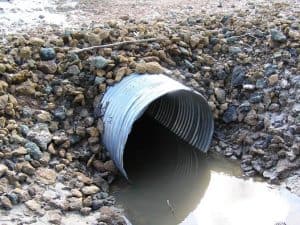
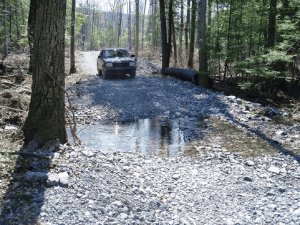
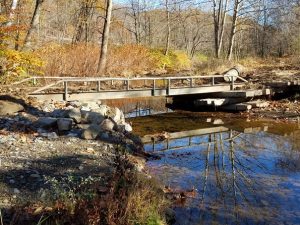
To minimize any impact on water flow or quality, stream crossings are allowed only under certain circumstances. Chapter 105 regulations govern the crossing of streams and their floodways, wetlands, and other bodies of water. Bridges, culverts, fills, walls, embankments, other structures, and activities which change the course, current, or cross section of a stream, floodway, wetland, or body of water are all regulated by Chapter 105. Most structures and activities in Pennsylvania waterways (dams, water obstructions and encroachments) require some type of authorization or permit from DEP to protect public health, safety, and the environment.
There are three levels of permitting provided by Chapter 105: waiver of permit requirements, general permit coverage, and issuance of a Chapter 105 Water Obstruction and Encroachment Permit. If the activity is not waived it may qualify for general permit coverage. General permits have been issued for similar types of activities and contain specific conditions and limitations. If the regulated activity does not qualify for these, then an individual permit is required.
- Permit waiver: The installation of a temporary or permanent stream crossing in a stream or floodway with a drainage area of less than 100 acres does not require a Chapter 105 permit if the crossing will not impact a wetland (wetland impacts require a permit)[25§ 105.12(a)(2)]. However, wetlands are often located in the floodways adjacent to headwater streams. Also, even though the stream crossing may not require a permit, sediment pollution and encroachments are still regulated, and the crossing may still require federal authorization from the USACOE.
- General Permit 7: (Minor/Permanent Road Crossings)
- General Permit 8: (Temporary Road Crossings)
- Water Obstruction-Encroachment / Joint Permit
Forest management operations are also subject to the Federal Clean Water Act (CWA) when operating in a federally jurisdictional wetland, or crossing any “waters of the US” including streams, sloughs, marshes or bogs. The U.S. Environmental Protection Agency (EPA), the U.S. Army Corps of Engineers, and the state Department of Environmental Protection (DEP) jointly regulate wetlands. Although in most cases tree harvesting can occur in wetland areas, Chapter 105 prohibits the “encroachment” (for example, a road crossing) of any wetland without a permit from DEP. The erosion and sedimentation control plan described under Chapter 102 must accompany the permit application along with a letter from the local County Conservation District stating that it has reviewed the plan and found it satisfactory. DEP and the Corps have a consolidated joint permit application process. The permit issued by DEP will usually satisfy federal application requirements, utilizing a Federal State Programmatic General Permit (PASPGP); in special cases, the Corps issues a separate permit. Enforcement of Chapter 105 as it relates to watercourses such as wetlands is the responsibility of the DEP regional offices.
Ford crossings (road crossing of a stream utilizing the existing stream bed) have complex permitting options. If an existing ford will need to be maintained by adding stone or the approaches will need graded, it is likely the activity will need a permit. Skidding through ford crossings is prohibited.
- Pennsylvania Natural Diversity Inventory (PNDI)
- DEP Statewide Existing Use Classifications [Look for link to summary table at bottom of webpage]
- PA Fish & Boat Commission Trout Waters [Any stream classified as Wild Trout or Stocked Trout has date restrictions for permitted work]
- USFWS National Wetlands Inventory [Interactive Map]
- National Register of Historic Places [General Permits Do Not Apply]
- National Registry of Natural Landmarks [General Permits Do Not Apply]
- County Natural Heritage Inventory
- Pennsylvania Scenic Rivers [GP7 Does not apply within 100 feet]
- National Wild and Scenic Rivers [GP7 Does not apply within 100 feet]
- FEMA Flood Map Service Center [GP7 Does not apply to FEMA delineated floodways]
- An online GIS-based method for determining upstream drainage area is available through the USGS StreamStats Interactive Map. Navigate to the location of your operation, Use the “Watershed Delineation from a Point” tool (button with black dot and crosshairs at top of the screen), and click on the location of your stream crossing (note: you must be zoomed out to at least 1:24000). Once the basin is delineated, click on the “basin Characteristics” icon and select “Compute Parameters” from popup window. Area will be given in square miles – Divide by 640 to determine the basin size in acres.

Timber harvesting operations are also subject to regulations enforced by the Pennsylvania Fish and Boat Commission’s Waterways Conservation Officers under Title 30 of the Pennsylvania Consolidated Statutes (Commonly referred to as the “Fish Code”). These provisions not only protect game fish, but also include fish bait, bait fish, amphibians, reptiles, and aquatic organisms (defined as any plant or animal that grows or lives in or upon water). It should be noted that the Fish Code generally does not require proof that any particular fish has been damaged or killed to prosecute a violation.
The most relevant statutes of the Fish Code include:

The Pennsylvania Integrated Water Quality Monitoring and Assessment Report [Integrated Report – 305(b) and 303(d)] is a biennial report prepared by Pennsylvania DEP that assesses the quality of waters in Pennsylvania and identifies waters throughout the state that are impaired for various reasons. The integrated report demonstrates the effectiveness of state forestry Best Management Practices (BMPs) taught by the PA SFI Professional Timber Harvester Training Program and the overall negligible negative impact that timber harvesting (Silviculture Activities) has on water quality.
Only a small fraction of a percentage of the state’s impaired stream miles are attributed to forestry activities. Of the contributing sources tracked by DEP, silviculture ranks in the bottom five. Compare this to agriculture and mine drainage which top the list and contribute over half of the total impaired stream miles across the state. Even “Natural Sources” are listed as the cause of impairment for more miles than silviculture.
BMPs are working to protect Pennsylvania’s water resources, and it is a testament to the vigilant efforts of timber harvesting professionals, foresters, and landowners across Pennsylvania that are implementing these practices.
Disclaimer: The material and resource links provided on this site are for informational use only, and should neither replace the advice of qualified legal professionals or regulatory authorities, nor be taken as recommendations, endorsements, legal advice, or substitution for regulatory compliance. Use this information at your own risk, and always be sure to consult with an expert before making legal decisions.
